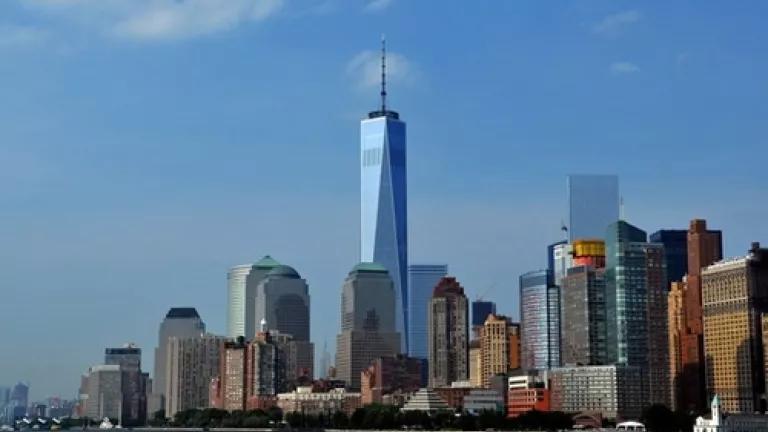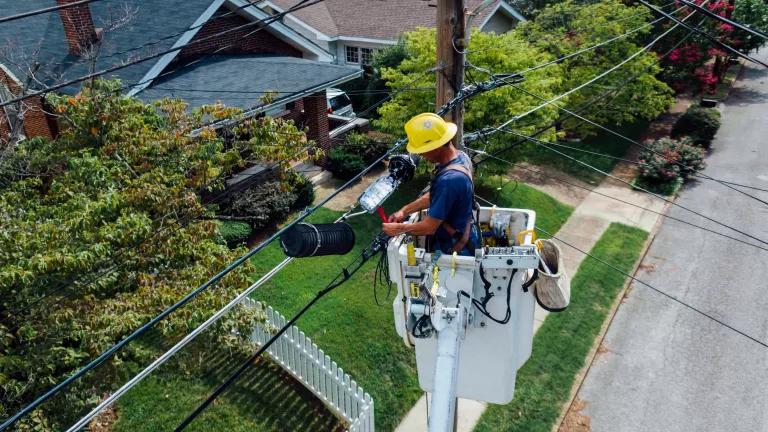
Guest blog by my colleague Kate Mann who leads NRDC's Affordable Multifamily Demonstration Project, an initiative to help increase access to energy efficiency benefits for affordable multifamily homes.
What if, just by punching your address into a website, you could find out how much money your building wastes on energy and how much it could save with some simple, easy-to-finance retrofits? For owners of large buildings in New York City, that possibility is now a reality, thanks to the good efforts of the New York City Energy Efficiency Corporation and Steven Winter Associates. (NYCEEC is a pioneering, non-profit energy efficiency finance company; SWA is a likewise pioneering engineering firm that focuses on energy efficient buildings.)
Together, NYCEEC and SWA have created efficienSEE, a website that allows building owners, property managers, and members of the general public, too, to get a pretty accurate, back-of-the-envelope estimate of how much money building owners can save on electricity and fuel on an annual basis, using just a few keystrokes. The website also explains whether so-called co-generation makes sense and can save owners and portfolio managers additional cash. (The energy and pollution savings from co-gen, which usually uses natural gas to produce electricity or mechanical power on-site, and then recovers the resulting waste heat for heating, cooling and other applications, can be substantial, especially in buildings and campuses larger than 200,000 square feet. The technology can make them more climate-resilient, too.)
The efficienSEE website takes energy benchmarking data filed with New York City, along with some building energy performance data from the New York State Energy Research and Development Authority, sends it through a carefully calibrated algorithm--et voilà : Results. The energy-savings data is based on the harvesting of low-hanging energy waste--upgrades that have a simple payback of seven years or less. efficienSEE's got a bonus, too: After owners and property managers learn their potential for savings, they can contact NYCEEC, which will help them get the ball rolling on upgrades and financing.
If the 25 percent of buildings with the most waste in the city performed energy upgrades, they could collectively save at least $134 million a year, and reduce greenhouse gas emissions by 380,000 metric tons annually. That's the equivalent of powering almost 35,000 homes for one year using clean, renewable energy. And it's a win for owners, tenants (who have lower energy costs to cover), and all of us.
At the moment, the database behind the website includes information on about 6,000 apartment buildings that are at least 50,000 square feet in size, with many of them part of the city's affordable housing stock. efficienSEE can be a particular boon there, as cash-strapped owners of affordable apartment buildings often find it difficult to invest in energy audits before having a sense of what the potential savings might be. Indeed, NRDC has seen first-hand how hard this can be as we've worked with owners of affordable apartment building to navigate the process of getting energy retrofits for their properties, through our Affordable Multifamily Demonstration Project.
Now, though, with efficienSEE, many owners of affordable apartment buildings can get a sense of their buildings' potential savings before even spending a dime. In this way, the efficienSee tool moves the city one step closer to making energy efficiency more accessible to this underserved population and helping to increase demand for energy efficiency upgrades among affordable buildings owners. Thanks to efficienSee, and initiatives like NRDC's Energy Efficiency for All campaign, which has fought hard to increase the amount of utility funding available for efficiency improvements at affordable multifamily properties, the barriers facing this segment of the market are steadily being removed.
There's more good news, too: NYCEEC intends to add a lot more apartment buildings, and commercial real estate, along with water savings potential, by the end of 2016. (Despair not if your building's numbers don't come up after you punch its address into the website's search function: You can contact NYCEEC directly and they'll do their best to provide the information you seek.)
EfficienSEE isn't the only big-data-based website that can help New York City building owners size up their energy- and pollution-savings potential. Metered.nyc allows building owners and others to compare how their building's energy use stacks up against comparable buildings in the city. (Launched this June by the Urban Green Council, the New York affiliate of US Green Building Council, Metered.nyc draws on the same energy benchmarking data from New York City that efficienSEE uses.)
Both of these websites--efficienSEE and Metered.NYC--have some room to expand. But their launch heralds a day when owners, tenants, and regular city residents can easily access a building's energy information and use it to save money and stop pollution simultaneously. Those are some very big benefits from big data.
(Photo: New York City skyline via pexels.com)



